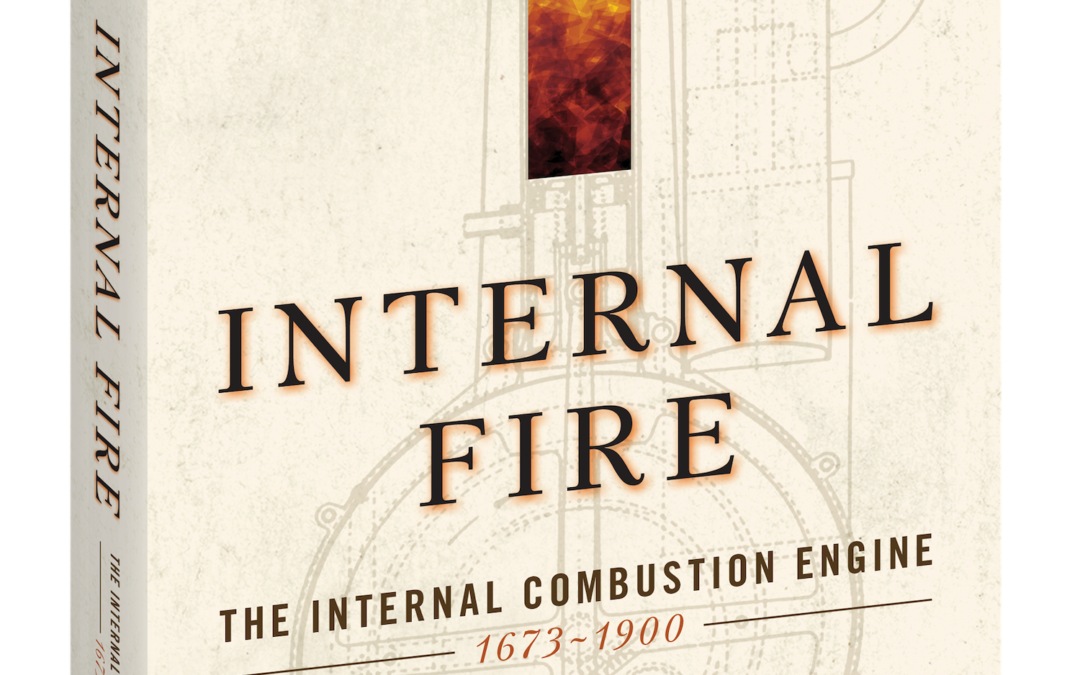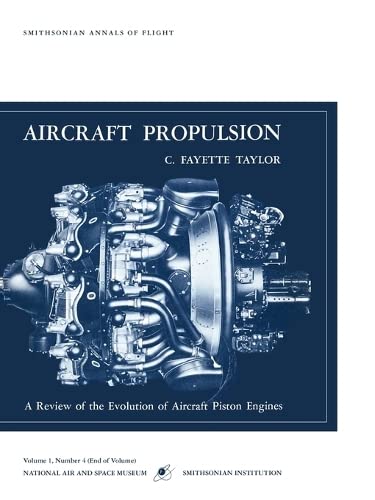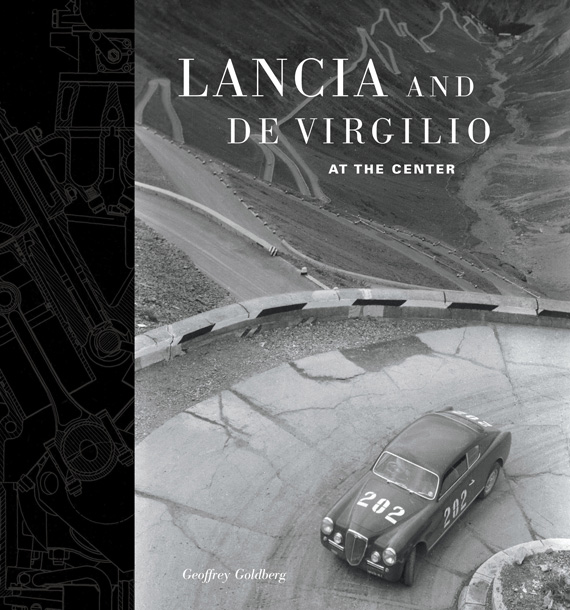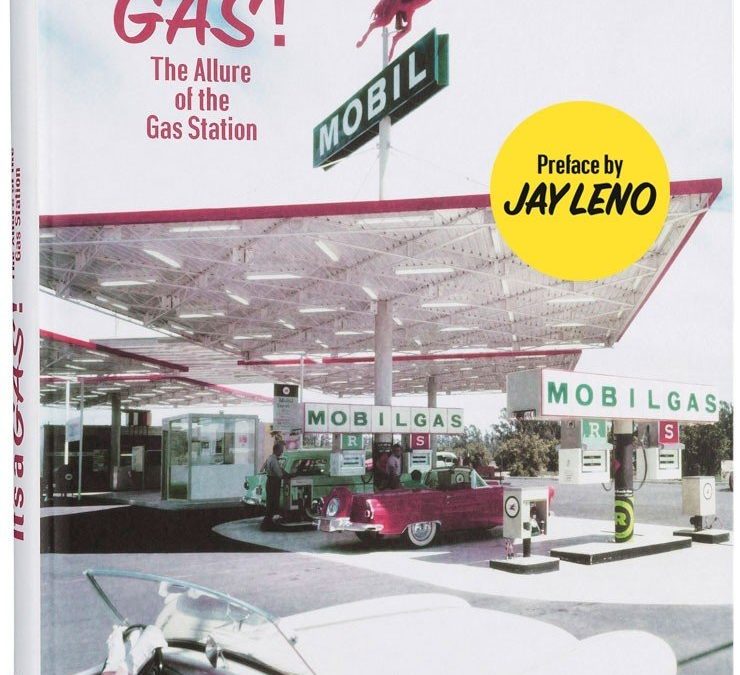
This book is a reprint of an important publication that was first published by the Society of Automotive Engineers in 1989. It is an authoritative and entertaining account of the evolution of the very early internal combustion engine. We at Octane Press believe it to be a critical piece of automotive history and are happy to have a revised edition to offer to our readers. If you want to understand how the engine in your favorite machine came to exist, this book and Diesel’s Engine, the companion book by the same author, are critical additions to your library!
Internal Fire is the captivating history of the internal combustion engine and the creative individuals who brought it to life. From gunpowder to diesel, the development of these early powerhouses has been recorded from all sides. The influences of new technologies, patents, and obtainable fuels, as well as a growing understanding of the very nature of heat itself are all explored.
Internal Fire is not intended as a textbook, but as the well-researched and readable chronicle of a mechanical servant that has greatly influenced life in the 20th century and beyond.
You will find in this comprehensive book:
■ Gunpowder and Steam
■ Air Engines
■ Thermodynamics: Carnot Charts a Course
■ Patents: Origin and Influence
■ Internal-Combustion Engines: 1791-1813
■ Searching and Perfecting: 1820-1860
■ The Genesis of an Industry
■ Otto and Langen
■ Otto’s Four-Stroke Cycle
■ Brayton and His “Ready Motor”
■ The Two-Stroke Cycle
■ Gas and Gasoline Engines to 1900
■ Oil Engines: An Interim Solution
■ Rudolf Diesel: The End of the Beginning
“This new and well-researched work by Lyle Cummins has at last provided a readable account of the work and people concerned in the search for a more efficient heat engine cycle.”
– The Newcomen Society Bulletin
“Thoroughly researched and eminently readable.”
– The Institute of Mechanical Engineers
“Fascinating tour through the early efforts to design a practical internal-combustion engine.”
– Road & Track

This, the fourth number of Smithsonian Annals of Flight, was the Fourth Lester B. Gardner Lecture, delivered at the Massachusetts Institute of Technology, March 8, 1962, and at the Smithsonian Institution, October 5, 1962. Subsequently it was published in the General Appendix to the Annual Report … of the Smithsonian Institution … for the Year Ended June 30, 1962 (1963). As presented here, the text has been revised, enlarged, and updated. Its 72 illustrations, many of them new, include a number of engines, aircraft, and the materials in the collections of the National Air and Space Museum. With it, for the first time, appears the bibliography which accompanied the original manuscript and which, for lack of space, could not then (1963) be printed. This has since been edited and expanded to approximately double its original length by Dr. Richard K. Smith while he was serving on the Museum staff. Its nearly 600 entries, most of them contemporary accounts, cover the whole range of engine development and related activities from the early beginnings. This bibliography should be a useful and welcome tool, both for the airplane enthusiast and for the historian of aviation technology.

In the years following the Second World War, Lancia was the most innovative automotive company in Italy, if not in the world. The Lancia cars were technically advanced, with an elegant and competitive design on the track. For more than four decades, Francesco de Virgilio was one of the primary figures in the history of Lancia. De Virgilio entered the company as a young engineer in 1939, becoming a member of the Lancia family, when he married the niece of the founder Vincenzo Lancia, in 1947. In Lancia and de Virgilio, the author Geoffrey Goldberg examines the life and career of De Virgilio from multiple perspectives. Drawing on a large number of original documents, technical drawings and photographs from the archives of the De Virgilio family, Goldberg reveals the essential role of De Virgilio in the projects that defined Lancia during its best years in the 1940s and 50s. These include the development of the first production V6 engine, launching and improvement of the Lancia Aurelia, and the management of the short racing program of the company, which produced the classic D50 Formula One car. In addition to engineering and competitions, De Virgilio was directly involved in the events that effected the management and position of Lancia in the Italian automotive industry. In 1955, the family released its control of the company, leading to its eventual acquisition by Fiat in 1969. Through all these upheavals, De Virgilio continued to experiment and innovate, working on multiple projects, from diesel engines for trucks to the first versions of the rally car Stratos in the 1970s. Whatever the assignment, his persistent search for excellence remained a constant element defining Lancia, up to his departure from the company in 1975. Despite his technical successes and his popularity within the company, De Virgil’s contributions have been widely neglected to date.
Produced with the support of the RevS Institute for Automotive Research, Lancia and de Virgilio is the product of more than six years of meticulous research. The book is illustrated with hundreds of unpublished photographs that depict the images of Francesco de Virgilio at work, on the track and at home with his family, as well as dozens of drawings, projects and other finds. In addition to this abundance of details and information, the book, also captures the vibrant spirit of Italian, culture and society during the post-war period. Lancia and de Virgilio provides unique insight into both automotive and social history. The book was greatly appreciated by enthusiasts: it won several awards, including the Cugnot Award of the Society of Auto Historians for the best book of the year. It was also reviewed by the New York Times and the Republic, a rather exceptional event for a book on a company and its history already seventy years in the past.
This limited edition reprint is an opportunity not to be missed for those who did not secure the first edition in 2014.

SOLD OUT
During his lifetime, Brazilian Formula 1 racing champion Ayrton Senna was widely recognized as a leader in his sport, a pioneer in driving technique, a hard racer, and a compassionate man. Above all, he believed that impoverished children should be able to realize their potential. Since his fatal crash during the 1994 San Marino Grand Prix, Senna’s remarkable career and humanitarian outlook have continued to inspire the world. The Ayrton Senna Institute, a fulfillment of his dreams, has helped educate more than 7.8 million Brazilian children since 1994, and its impact only continues to grow.
Now, the Senna family has opened its archives, sharing photographs of private moments at home and at the racetrack. Additionally, an assortment of treasured ephemera from Senna’s life is included in 13 beautiful envelopes. Readers can pull out and examine realistic replicas of his baptism certificate, handwritten letters and race agendas, a keepsake formal photo, autographed team stickers, and more than 20 other special items.
The book’s striking imagery forms a focal point around which bold design and compelling narrative intertwine. In exclusive new interviews, Senna’s family and teammates share personal anecdotes and favorite memories. Fully illustrated and uniquely interactive, Ayrton Senna: Memories and Mementoes from a Life Lived at Full Speed will be a cherished addition to any fan’s collection.

The first gasoline was sold in pharmacies―but this was to change in the 1950s. As the car experienced its great rise in popularity, gas stations began to pop up like mushrooms out of the ground. Futuristic and progressive, these modern temples of mobility became roadside reference points for young people hungry for independence, and to everyone who strove for a sense of freedom.
It’s a Gas! explores the surprisingly diverse world of the gas station―a functional high tech temple, a transit zone, a film set, a converted residence, or an abandoned ruin hidden in a backyard. The world of pumps is full of surprises, ready to be discovered in this book.
The preface was written by US-American talkshow legend and passionate car collector Jay Leno.
Sascha Friesike, Assistant Professor of Digital Innovation at VU University in Amsterdam and associated researcher at Alexander von Humboldt Institute for Internet and Society Berlin, is the author of the crime series Grobmann und Pieper and photographer of gas stations.







